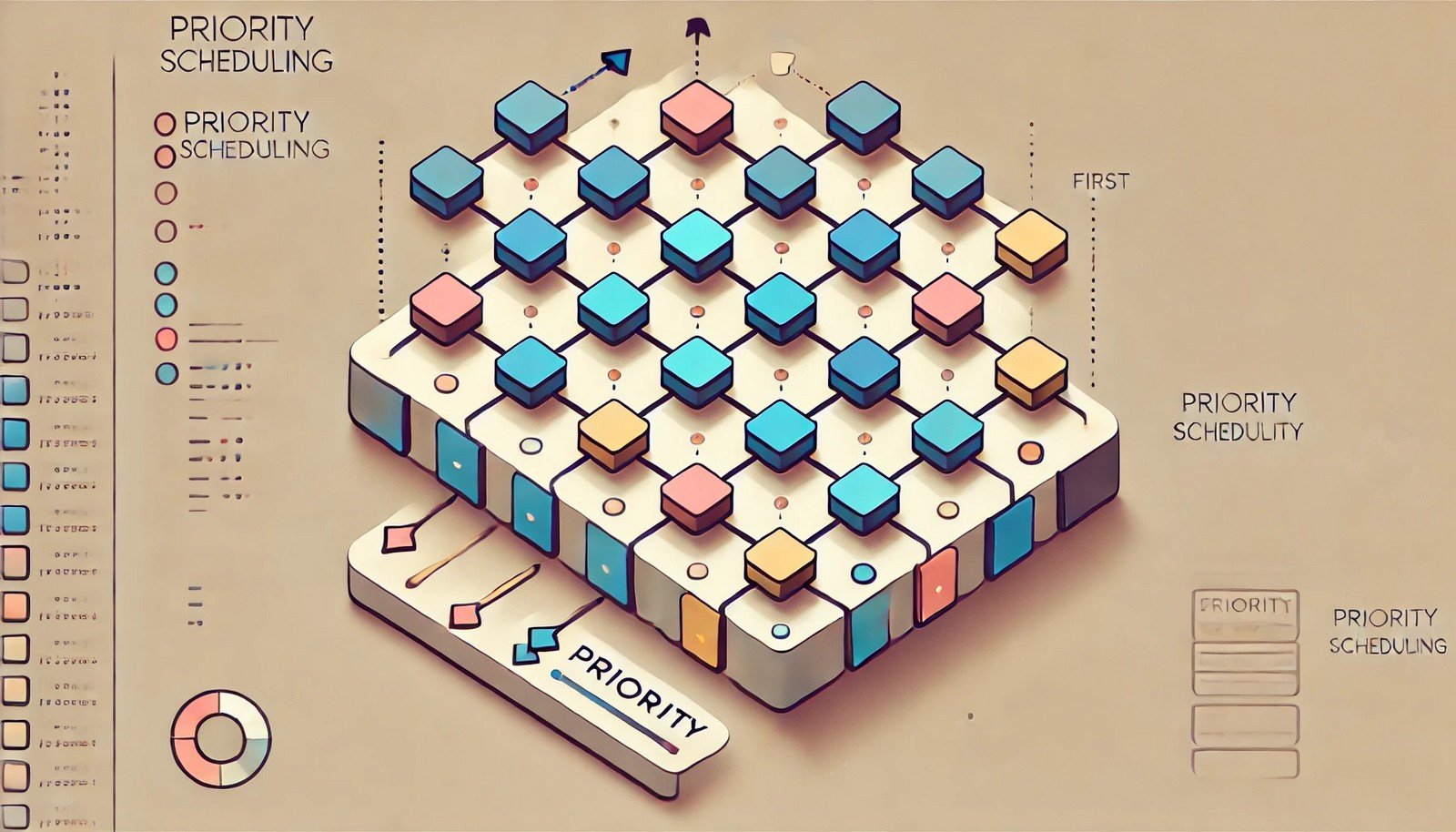Priority Scheduling
 (Representational Image | Source: Dall-E)
(Representational Image | Source: Dall-E)
Quick Navigation:
- Priority Scheduling Definition
- Priority Scheduling Explained Easy
- Priority Scheduling Origin
- Priority Scheduling Etymology
- Priority Scheduling Usage Trends
- Priority Scheduling Usage
- Priority Scheduling Examples in Context
- Priority Scheduling FAQ
- Priority Scheduling Related Words
Priority Scheduling Definition
Priority Scheduling is a CPU scheduling algorithm in which processes are assigned a priority value. The CPU is allocated to the process with the highest priority. If two processes have the same priority, they are scheduled according to their arrival order. Priority Scheduling can be preemptive or non-preemptive. It is commonly used in real-time systems where critical tasks must be executed first. However, it may suffer from "starvation," where low-priority processes wait indefinitely if high-priority tasks keep arriving. Aging techniques can mitigate this issue by gradually increasing the priority of waiting processes.
Priority Scheduling Explained Easy
Imagine you're in a queue at a hospital. Instead of serving patients in order of arrival, the doctor calls in the most urgent cases first. If someone has a severe injury, they get treated before someone with a mild fever. In computers, Priority Scheduling works similarly—processes with higher priority get CPU time before lower-priority ones.
Priority Scheduling Origin
The concept of scheduling in computing dates back to early operating system designs in the 1950s. Priority-based scheduling became prominent as computers began handling multiple processes simultaneously, requiring a way to manage critical tasks efficiently.
Priority Scheduling Etymology
The term “priority scheduling” comes from the word "priority," meaning precedence or importance, and "scheduling," referring to the organized execution of tasks.
Priority Scheduling Usage Trends
Priority Scheduling is widely used in operating systems, particularly in real-time applications like embedded systems, medical devices, and air traffic control. With the rise of cloud computing and multi-threaded environments, priority scheduling has evolved to optimize performance across various workloads.
Priority Scheduling Usage
- Formal/Technical Tagging:
- Operating Systems
- CPU Scheduling
- Real-Time Systems - Typical Collocations:
- "priority-based scheduling"
- "preemptive priority scheduling"
- "CPU scheduling algorithm"
- "priority queue implementation"
Priority Scheduling Examples in Context
- A real-time operating system in a pacemaker ensures life-saving tasks run before non-critical operations.
- Printers use Priority Scheduling to print urgent documents before regular ones.
- In cloud computing, priority-based task scheduling optimizes resource usage for critical applications.
Priority Scheduling FAQ
- What is Priority Scheduling?
Priority Scheduling is a CPU scheduling technique where processes with higher priority execute first. - What are the types of Priority Scheduling?
It can be preemptive (where a higher-priority process can interrupt a lower-priority one) or non-preemptive (where processes run until completion or blocking). - What is the main drawback of Priority Scheduling?
Starvation occurs when low-priority processes wait indefinitely due to continuous arrival of higher-priority tasks. - How is starvation prevented in Priority Scheduling?
Aging is a common technique where waiting processes gradually gain higher priority over time. - Where is Priority Scheduling used?
It is used in operating systems, medical devices, cloud computing, and network traffic management. - Does Priority Scheduling guarantee fairness?
Not always—higher-priority processes dominate CPU time, leading to potential delays for low-priority ones. - What data structures are used for Priority Scheduling?
It is often implemented using a priority queue or heap. - Can Priority Scheduling be combined with other algorithms?
Yes, hybrid scheduling techniques incorporate priority-based selection with round-robin or shortest job first. - Is Priority Scheduling suitable for multi-core processors?
Yes, but additional balancing mechanisms may be required to distribute workloads efficiently. - How does Priority Scheduling impact system performance?
It enhances responsiveness for critical tasks but may increase waiting time for lower-priority processes.
Priority Scheduling Related Words
- Categories/Topics:
- CPU Scheduling
- Operating Systems
- Task Management
Did you know?
NASA uses priority scheduling in space missions to ensure real-time data transmission from spacecraft to Earth, prioritizing crucial signals over non-essential data.
PicDictionary.com is an online dictionary in pictures. If you have questions or suggestions, please reach out to us on WhatsApp or Twitter.Authors | Arjun Vishnu | @ArjunAndVishnu

I am Vishnu. I like AI, Linux, Single Board Computers, and Cloud Computing. I create the web & video content, and I also write for popular websites.
My younger brother, Arjun handles image & video editing. Together, we run a YouTube Channel that's focused on reviewing gadgets and explaining technology.



Comments powered by CComment